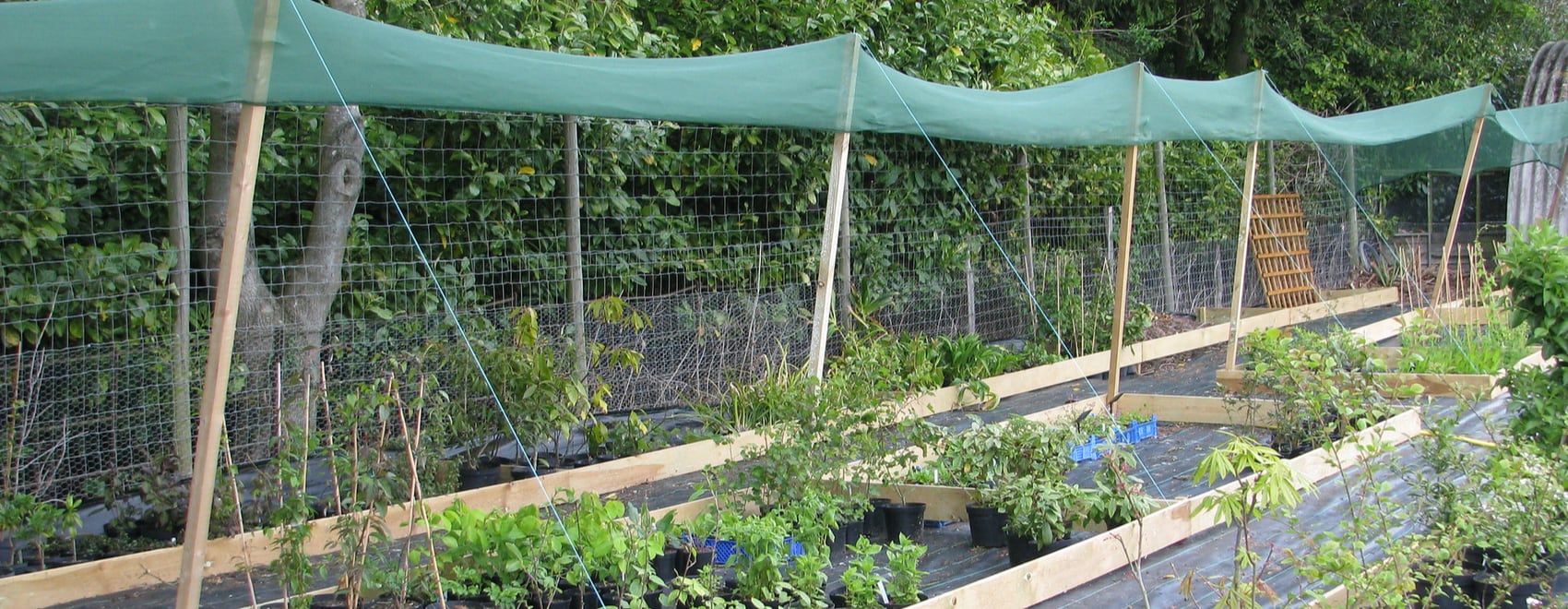5 Essential Tips for Using Shade Cloth Over Garden Beds
When the sun is at its strongest, your plants can suffer from heat stress and sunscald, which can lead to poor growth and reduced yields. That’s where using shade cloth over garden beds can make a dramatic difference. By providing just the right amount of shade, you can protect your plants from excessive heat, reduce water evaporation, and create a healthier growing environment. In this article, we’ll explore five essential tips for choosing and using shade cloth effectively. Whether you’re a seasoned gardener or new to the world of garden shading, these insights will help ensure your plants thrive all season long.

Tip #1 – Choose the Right Shade Cloth Material
A successful shade cloth setup starts with choosing the right material for your specific gardening needs. The most common materials for shade cloth include polyethylene and polypropylene because they are lightweight, durable, and allow adequate air circulation.
- Polyethylene: Known for its resistance to UV rays, polyethylene shade cloth is often woven or knitted. It provides a balance of durability and breathability, making it suitable for most home gardens.
- Polypropylene: Similar to polyethylene but generally considered slightly more breathable. This option is excellent for humid climates where air circulation is crucial to prevent fungal growth.
When deciding on a material, consider factors such as local climate, plant types, and your budget. If you plan to reuse the shade cloth for multiple growing seasons, invest in high-quality material that can withstand weather changes and regular wear and tear.
Tip #2 – Determine the Ideal Shade Percentage
Shade cloth is labeled by the percentage of sunlight it blocks—commonly ranging from 30% to 70%. Choosing the right shade percentage depends on your region’s climate and the types of plants you grow.
- 30–40%: Perfect for plants that enjoy partial sun, such as lettuce or spinach. This range provides light shading while still allowing ample sunlight for photosynthesis.
- 50–60%: A good middle ground for many vegetable gardens, especially if you live in a region with intense mid-day sun.
- 70–90%: Reserved for very high-heat conditions or for sensitive plants that can’t tolerate strong sunlight at all (e.g., orchids or young seedlings).
According to a study by the University of California Cooperative Extension, using the correct shade percentage can significantly reduce heat stress on plants and even improve overall yield. Monitor your plant growth and adjust the shade percentage if you notice signs of inadequate or excessive sunlight, such as yellowing leaves or slowed growth.
Tip #3 – Proper Installation Techniques
Installing a shade cloth over garden beds effectively can be the difference between healthy, thriving plants and subpar results. Here’s a straightforward approach:
- Measure Your Garden Beds
Determine the dimensions of the area you want to cover. It’s often best to add a bit of extra cloth on each side for secure fastening. - Set Up Anchor Points
Use stakes, wooden frames, or metal pipes at each corner of the bed. If you’re covering a large area, consider adding center support posts to prevent the cloth from sagging. - Attach the Shade Cloth
Secure the cloth to the anchor points using zip ties, clips, or ropes. Keep it taut but not overly tight to allow some flexibility in the wind. - Check Height and Angles
Positioning the cloth at least 1–2 feet above the plants allows sufficient airflow and prevents heat from being trapped underneath.
Safety should always be a priority during installation. Wear protective gloves when handling sharp tools or edges, and ensure the structure is stable enough to withstand weather changes, especially strong winds.
Tip #4 – Best Practices by Season and Crop
Not all gardens or growing seasons require the same level of shade. Adapting your approach ensures you’re giving your plants the best possible environment:
- Spring & Early Summer
In milder climates, a lower shade percentage cloth (30–40%) can help young seedlings acclimate to outdoor conditions without getting scorched. - Mid-Summer
During peak heat, increase shading (50–60% or higher) to protect your plants from intense sun exposure. Leafy greens and herbs benefit greatly from this, maintaining better flavor and texture under shade. - Late Summer & Fall
As temperatures drop, you may reduce or remove the cloth entirely. Warm-season crops like tomatoes can handle more sun when the intensity decreases.
Different crops have varying sunlight needs. Tomatoes and peppers, for instance, can tolerate brighter sunlight than delicate lettuces or spinach. By fine-tuning your shade cloth coverage to match each crop’s requirements, you’ll maintain optimal growing conditions.
Tip #5 – Maintenance and Care
To maximize the lifespan and effectiveness of your shade cloth, regular maintenance is essential:
- Inspect for Damage
Over time, wind and general wear can cause small tears or frays. Repair these quickly using patch kits or strong adhesive tape to prevent further ripping. - Clean Periodically
Dust, dirt, and debris can accumulate on the cloth, reducing airflow and potentially harboring pests. Cleaning with a garden hose or gently wiping with a soft brush can keep the material in prime condition. - Store Properly
If you remove the shade cloth during cooler months, fold it neatly and store it in a clean, dry area. Avoid direct sunlight in storage to prolong its UV resistance.
Taking a few minutes each season to check on your setup helps ensure the cloth remains in good condition, providing reliable garden shade for years to come.
Conclusion
Using shade cloth over garden beds can be a game-changer for gardeners looking to protect their plants from extreme heat and scorching sun. By choosing the right material, selecting an appropriate shade percentage, installing the cloth securely, tailoring your approach to each season and crop, and maintaining the cloth carefully, you’ll create a thriving environment for your garden.
Have you tried using shade cloth in your garden? Share your experiences in the comments below, and don’t forget to subscribe to our newsletter for more gardening tips, techniques, and inspiration. With a little planning and the right shade cloth strategy, you’ll be well on your way to growing a flourishing, resilient garden all year long.

